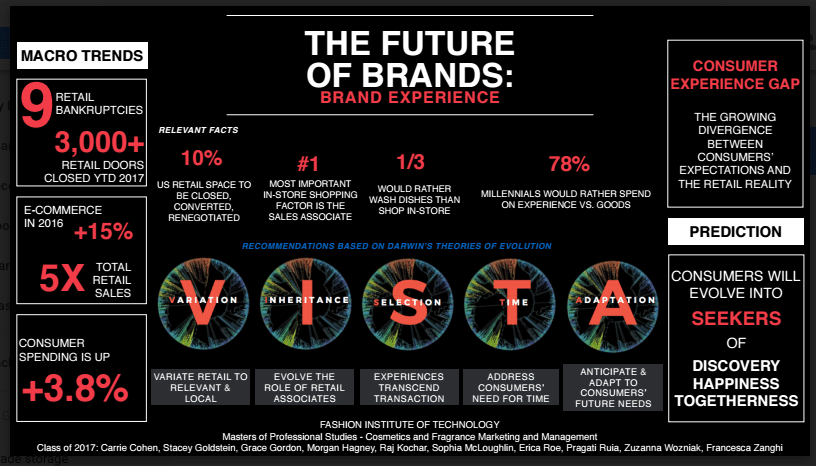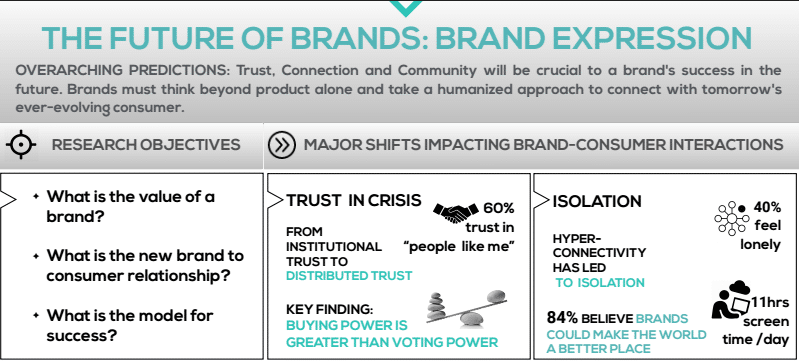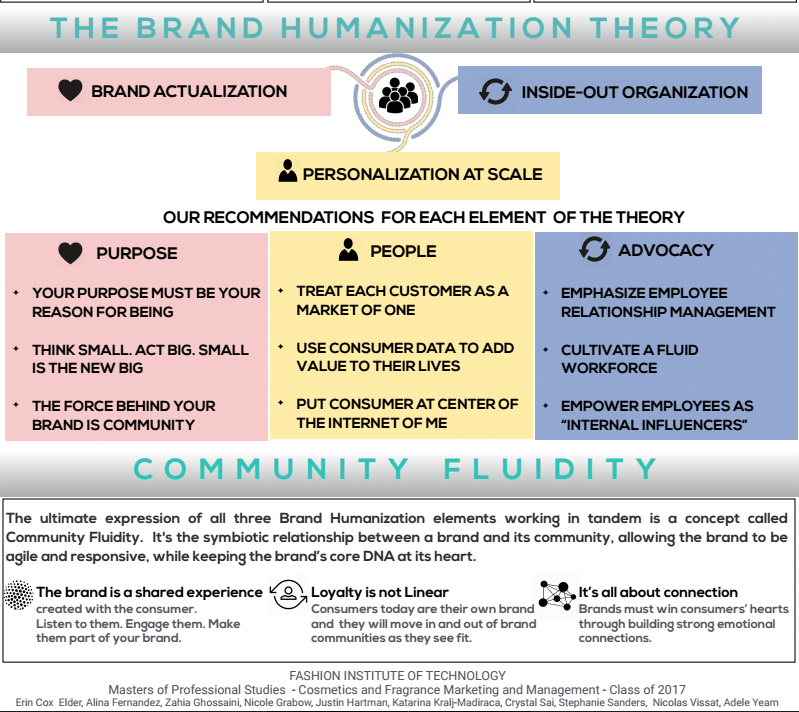There is a revolution occurring—and it’s not of the political sort. Brand loyalty is a thing of the past, retail doors are closing at an alarming rate, and power and influence have shifted into the hands of consumers, who now have the ability to take down a brand or a retailer in 140 characters or less.
The newly released 2017 Millennial Consumer Expectation and Brand Perception Survey from the Fashion Institute of Technology (FIT), a college of the State University of New York, discovered that an emotional connection is what really motivates millennials to purchase a branded product.
According to the survey:
- 48 percent are more likely to buy from a brand if they know the people behind it
- 47 percent want a brand to take ownership for its mistakes
- 47 percent want a brand to take their feedback into account
In other words, millennials seek a bond of trust between the brand and themselves—a combination of transparency, experience, and community—defined by the researchers as The Trust Loop.

“We are experiencing a renaissance in which the consumer is transitioning from relying on brands for information to actually telling brands what they expect and need, ultimately providing brand direction,” said the beauty industry professionals in FIT’s master of professional studies program in cosmetics and fragrance marketing and management.
The students further examined the data, conducted extensive global research, and interviewed industry executives, focusing on two thesis areas: 1) Brand Expression—the DNA of brand; and 2) Brand Experience—how brands are presented at retail.
The following are highlights of their findings, theories, predictions, and business imperatives.
Brand expression
Brands used to be a mark of quality, but in today’s volatile world, trust, purpose, connection, and community have become the key brand attributes valued by millennial consumers. According to the research, “Brands in the future must win the hearts, minds and, now most importantly, the trust of their consumers.”
The question is how? The answer can be found in a new theory devised by the students: The Brand Humanization Theory. It is composed of the following three elements and corresponding business recommendations.
- Brand actualization: 1) Develop an identifiable purpose for being that goes beyond a mission statement. It’s why you do what you do. 2) Think small, act big; small is the new big. 3) Foster a strong brand community.
- Personalization of scale: 1) Treat each customer as a market of one. Great examples are Netflix and Spotify. 2) Engage rather than target customers. 3) Use consumer data to improve their lives and offer convenience.
- Inside out organization: 1) Emphasize employee relationship management. 2) Cultivate a work environment where ideas freely flow between employees at all levels. 3) Empower employees to be internal influencers, rather than hiring external influencers, to reach consumers in a more authentic way.
When adopted, the Brand Humanization Theory will create what the researchers describe as Community Fluidity—a symbiotic relationship between the brand and its community that allows the brand to be agile and responsive while remaining true to its core DNA.


Brand experience
Retail is at a tipping point. The rise of e-commerce has fundamentally changed how consumers choose to interact with and experience brands. In addition, mall traffic is down 13 percent, and year-to-date, 3,000 retail doors have closed and nine retailers have declared bankruptcy; yet the U.S. is still over-stored compared to other major global markets.
The research further revealed that consumers are evolving faster than retailers, resulting in what the study defines as the Consumer Experience Gap. As only the most adaptable retailers will survive, the students took their cue from the Darwinian evolution theory of VISTA and developed five retail imperatives for today and tomorrow.
- Variation: Demonstrate greater flexibility with store locations and formats. Variation is needed to provide more relevant, unique, and localized shopping experiences. All stores do not, and should not, have to look alike.
- Inheritance: Liberate the role of retail associates via training and empowerment so they can transmit the brand’s DNA to better connect and serve customers.
- Selection: Prioritize the consumer over consumption, providing experiences that transcend transaction via immersive brand experiences, social spaces, and holistic lifestyle hubs.
- Time: Recognize that time will soon be the #1 currency for future shoppers.
- Adaption: Consumers will evolve into seekers, pursuing discovery of new experiences that lead to a sense of fulfillment. Anticipating consumer expectations will be the ultimate marker of success and survival in the future.
This study challenges retailers to select consumer experience over consumption—and the research supports that conclusion. Fifty-seven percent of U.S. consumers say they want stores to serve a higher function than simply selling product.
Because tomorrow’s brands will be much more than product, retailers and brands need to think beyond the shelves.







